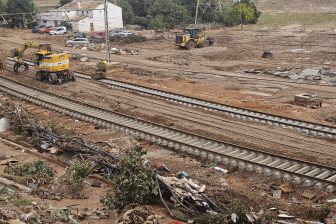
Moldova will reconstruct critical railway lines with EU support
Moldovan Railways are ready to kickstart a line reconstruction project worth 71 million euros. It concerns the reconstruction of the Balti-Valcinet-Ungheni and Chisinau-Cainari railway sections, both important for cargo flows from Ukraine. The state-owned company will carry out the project with the financial assistance of the European Bank for Reconstruction and Development (EBRD) and the EU’s Foreign Policy Needs instrument.
“The project will allow train lines to carry more freight faster”, said EBRD, one of the funding parties. The bank will provide 23 million euros for the project, while 20 more million euros will come from the Foreign Policy Needs instrument. The remaining funds (28 million euros) will be provided by Moldovan Railways, who will also implement the project.
Corridor to export ports
Both lines will increase the capacity and speed for Ukrainian products to find their way to Black Sea ports. The Balti-Valcinet-Ungheni line will stretch from the Moldovan North to the border with Romania next to Iasi. The other will improve the connection between the Moldovan capital and the country’s southern border with Ukraine and Romania.
The main objective will be to facilitate traffic heading to the port of Constanta, which is already known for its importance as a Ukrainian grain export hub. On the other hand, the reconstructed lines will facilitate traffic towards the junction of the Moldova-Romania-Ukraine border area. That is where smaller Danube ports like Galati (Romania), Giurgulesti (Moldova), Reni and Ismail (Ukraine) group. As EBRD underlines, these ports’ accumulated capacity can substantially help Ukrainian cargo exports.
It should be noted that in mid-2022, the Romanian transport ministry restored the broad gauge line between Giurgulesti and Galati to provide more traffic options. Additionally, in early 2023, the Berezyne-Basarabeasca railway line connecting Southwestern Ukraine and Southern Moldova started receiving trains after almost a year of restoration work. The line links the stranded Odesa region with the Danube river ports. With the upcoming Moldovan investments, a more comprehensive regional network is shaping up.



